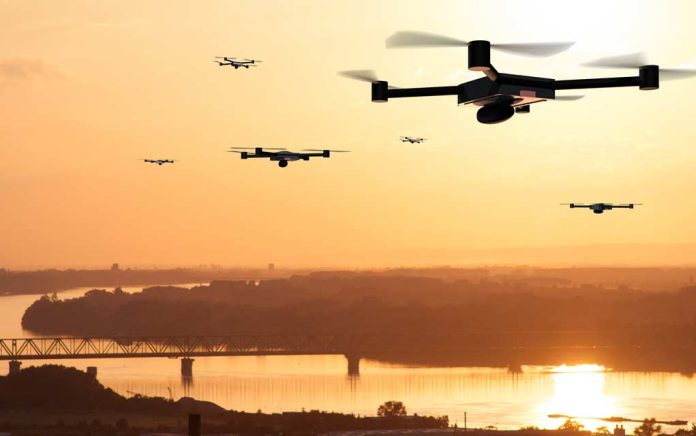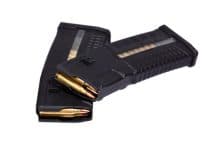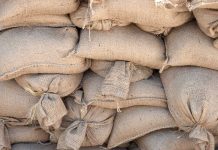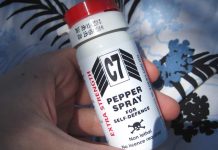
(TacticalNews.com) – Eleven seasoned Marines and veterans came together to provide a guide on how to camouflage yourself, specifically from enemy drones. This guide is to help you understand the purpose of camouflage, unmanned aircraft systems (UAS), and how to utilize camouflage on your gear.
The things you should think about when camouflaging are small elements and concealed sites. After all, if you or your equipment are largely grouped together, you’re going to be spotted with ease. The same goes for concealed sites, obviously, you don’t want to be in the open. Now onto the reason you’re here.
Purpose of Camouflage
In short, the purpose of camouflage is to reduce your physical signature to avoid detection, this includes: visual, radar, and infrared (IR) thermal. The fundamentals of camouflage are similar across all applications, you want:
- To disperse into small elements (if you’re in a group).
- Pick a concealed site.
- Operate mainly at night, during weather conditions, and at dusk and dawn.
- Blend yourself, equipment, and shelter with your background.
- Minimize movement.
Drones can’t operate during rain, wind, dust, and fog. Work during dusk and dawn because shadows are long, the sun glare is high, and thermal crossover masks your heat signature.
Understand UAS
The best way to hide and avoid enemy drones is to understand how to identify different models, and understand what each model is capable of. Some drones are used specifically for reconnaissance and will be taking photographs. Other recon drones are equipped with IR thermal imaging, meaning they can detect heat signatures. Others are used for drone strikes. It’s probably good to know which ones are going to be potentially shooting at you. The guide provides some images of different drones, but doesn’t go into detail as to which each is used for.
Camouflaging Your Gear
The main things you need to consider concealing other than yourself is your rifle, pack, and possibly a helmet. The idea of camouflaging your gear is to reduce the visual signature.
For a rifle, you can paint it to match your surrounding area, as well as wrap bootstraps, paracord, or similar items and add foliage. Be sure to keep the operating areas (chamber, optics, ejection port, and magazine) well clear, to ensure safe and efficient operation. You can also add a suppressor or muzzle break to reduce noise and muzzle flash.
For your pack, which is likely a bug-out bag, simply use bungee cords, paracord, or any similar strapping to wrap around the pack. Once done with that step, add foliage to conceal the shape of the pack, and help it blend with your environment. Some packs come prepared to add foliage, making it even easier to camouflage.
If you do have a helmet the process is very similar. You can add straps, or netting to your helmet. After that’s done, you again add foliage to match your background.
Camouflaging A Vehicle
Concealing a vehicle is much more of a task than concealing yourself. Use the terrain you have to your advantage; hills, wooded areas, and buildings can all be used to help camouflage your transport. The idea is to blend with your environment, if you can find an area providing aerial coverage you’re already in a good spot.
The military uses camo netting to cover their vehicles most of the time. You can put your own spin on it. Add foliage to the net to better help blend with your area. In open areas, this is harder to do, and you’ll likely be stuck with just the net. Whatever you do, make sure the net matches your environment. A white and light grey net is great for cold and snowy areas, but not so much for arid and desert areas.
Camouflage A Fighting Position
Now you’ll possibly have smaller areas like foxholes, along with a main stronghold. Each and every spot should be camouflaged. Concealing your holds and yourself just betters your chances of hiding.
Camouflaging an area is rather simple and follows the same principles as everything else. Pick a concealed site, add foliage, and do your best to blend in. You can use camouflage netting as well, along with branches from nearby trees (if you’re in the woods). If you use a vehicle to go between each place, be sure to conceal it as well.
Final Notes
Concealing yourself, your area, and your vehicle are all things you can do to help protect you, and your property. While there’s a lot more to it, these are the basics, enough to get you started. Concealment does you little good if you’re not trained and disciplined. The full 96-page guide is available, and public. No official release has been made as to how the military conceals itself, but being drafted by seasoned Marines it probably holds some bearing.
Copyright 2020, TacticalNews.com



















